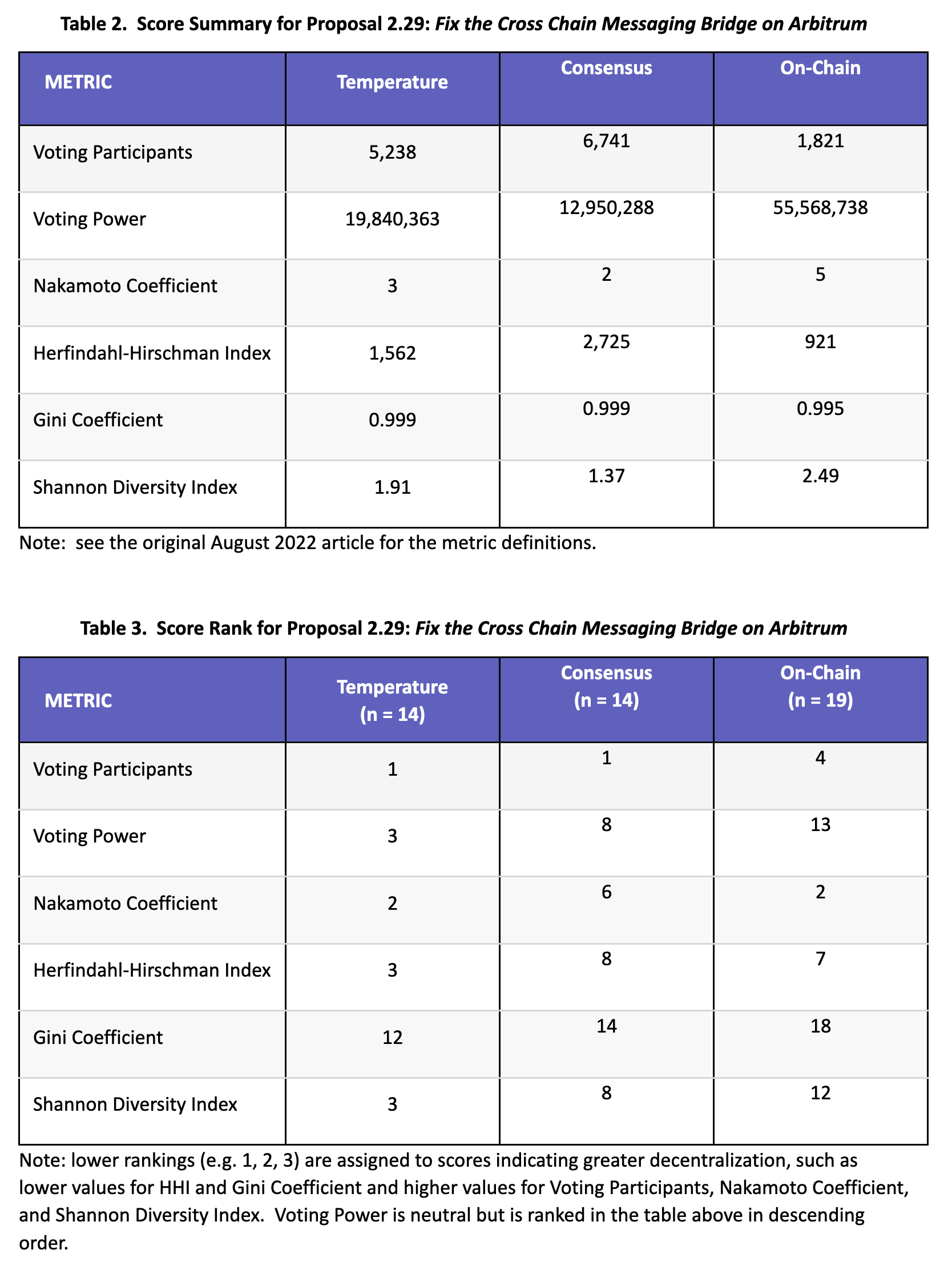This is the January update to the ongoing on-/off-chain Uniswap analysis. An archive of related work is provided below:
-
August 2022 (initial article), including an introduction and definition of the metrics analyzed.
-
September 2022 (update). Review of Proposal 2.24 Create the Uniswap Foundation
-
October 2022 (not applicable). There were no on-chain proposals completed during the prior month.
-
November 2022 (update). Review of Proposal 2.25 Deploy Uniswap V3 on zkSync
-
December 2022 (not applicable). There were no on-chain proposals completed during the prior month.
We also encourage readers to view the accompanying dashboard that can be accessed at https://signalcorps.shinyapps.io/Uniswap_On_Off_Chain_Governance/ .
JANUARY 2023 UPDATE
Since our last on-/off-chain analysis released in November, there has been one governance proposal that has had an on-chain vote: Proposal 2.29: Fix the Cross Chain Messaging Bridge on Arbitrum. Proposal 2.29 was executed with an overwhelming and near unanimous vote with 55,568,689 UNI in favor and only 36 UNI against.

Please see Tables 2 and 3 below for the respective scores and rankings for each of the six metrics analyzed, included two engagement-based metrics (voting participants and voting power) and decentralization-based metrics (Nakamoto coefficient, HHI, Gini coefficient, Shannon Diversity Index).
Proposal 2.29’s on-chain vote had the fourth highest number of unique voting participant addresses (1,821 participants) reported in an Uniswap on-chain proposal. Proposal 2.29 posted the highest voting participant counts in the Temperature and Consensus off-chain phases (5,238 and 6,741 participants respectively). This is building on the previous all-time high voter participants counts achieved in Proposal 2.25 (2,457 and 3,807 participants respectively).

Footer 1: Proposal 2.29 posted a high Gini coefficient at 0.995, similar to previous proposals that have generally ranged between 0.995 – 0.998. Counterintuitively, part of this is due to the high participation, as the Gini coefficient is a measure of equality. Therefore, as more relatively low UNI holders participate, then this will increase the Gini coefficient. A contrasting example is Proposal 2.09 that had the lowest on-chain Gini coefficient of 0.766 but only had 41 voting participants. This further highlights how the Gini coefficient is important for understanding the underlying base distribution among all UNI token holders, but it can be a poor signal when examining vote distribution and engagement.